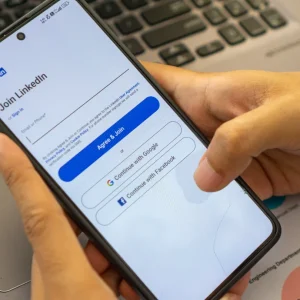
How long have you been using specific software for monitoring social media?
We started using Radian6 in 2010. Initially we started using it for service recovery – looking for people who were less than happy with our service and seeing if we could turn the situation around and make them a happy customer.
Since then we’ve used it for engagement and also for lead generation.
Were you using anything before this?
No, we were just sort of watching what was going on in social media using things like Google Alerts and manually searching through Twitter. We didn’t have a specific tool in place that would enable us to not stand on the sidelines but join in and get involved with social media.
Did you have a social media presence prior to getting the monitoring tools – a Facebook page, Twitter profile, that sort of thing?
Yes, but we were not hugely active. We had a YouTube channel where we put our TV adverts and a registered Twitter and Facebook page but we were not active on them.
So has this sort of technology enabled you to become more active on social media?
Yes, hugely. Social media is now part of our core business; it’s not just a marketing thing. We think it helps to distinguish ourselves from our competitors because we are by far and away much more active on social media than our competitors.
We have about 11,000 fans on our Facebook page, which for a distressed purchase brand isn’t bad.
What do you use your social media profiles for?
For Facebook, we use it for engagement; we run competitions, we built an online booking app so you can book to have your glass replaced through Facebook. I think we’re one of the first service brands to do that. We post regular updates and news as well.
With Twitter it’s slightly different. We predominately use it for service recovery and more recently lead generation. For example someone recently tweeted they had a chip in their windscreen. We spotted that in Radian6 and tweeted back to them, without being overtly sales-y, and asked if there was anything we could do to help and provided them with a link. They followed the link and less than two hours after the first tweet they were booked in.
So Twitter is more about the immediate contact and responding. We experimented with more engagement on Twitter but found that it didn’t really work. We had something called "Repair and Replace Friday", where if anyone was in need of something like that, not necessarily related to glass or cars, we would help but it didn’t really take off.
So we decided to keep the focuses slightly different for Facebook and Twitter.
So how is Radian6 used day-to-day at Autoglass?
We have two people in our contact centre who monitor it the whole time, during working hours. They have the console open and monitor it to see what’s happening. The reason we do it in customer services is they can then talk to the branch if needed – they are in the centre of it all. I get more involved with the engagement side of things.
If the customer service agents see something that needs attention, they will respond by way of apology. We then invite the customer to either direct message us the details or email or call us. We try to get them to come to us so we can look into the problem to see what is wrong.
If we can identify them through any information in the tweet then we can reach out to them but mainly it’s us inviting them to contact us.
The two people who do the social media responses have been specially trained because it’s a very different tone to the customer interactions over the phone or email or writing. It’s very specialist.
Is it really that different?
The basics are the same but it’s less formal, you’ve only got 140 characters on Twitter and you have to make the most of them. You need to abbreviate, which you wouldn’t do on email.
Do you find you are responding to incidents much faster via social media compared to email or phone calls?
I’d say so, yes. If someone is unhappy and tweets about it, they don’t expect a response the next day, they expect it immediately.
You mentioned earlier someone tweeted about a chip in their windscreen. How do you deal with words that have different meanings?
By setting up very specific searches. So if there is a mention of ‘fish’ along with ‘chips’, we’d make that a negative because it’s unlikely to be relevant to us. But if it was ‘windscreen’ and ‘chip’ or ‘car’ and ‘chip’ it would be.
We’ve learnt over the time we’ve been doing it to alter and optimise searches. If we find we’re suddenly getting lots of irrelevant mentions we will change the search parameter, because someone still has to look through them all which is resource intensive.
What about monitoring beyond Facebook and Twitter?
We also pick up blog comments and a lot of talk in forums, because there are a lot of forums for different model cars. The users there are very passionate about their car and will complain or ask other members for advice. But it is slightly more difficult to reach out that way because they are in a forum and you either have to join or approach the moderator. It is not as quick and easy to respond because they are slightly ring-fenced, as it were. Sometimes forums will ask for payment to reach their members, which complicates things.
Can you quantify how much money Radian6 may have saved or even made Autoglass?
The ROI question is the big one. In terms of return custom, it’s difficult because we see a customer on average every seven years. But then we do get recommendations and word of mouth and so on. It’s still relatively early days but we’re looking more closely at the numbers as we progress.






